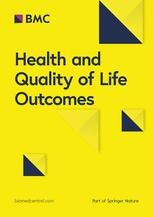
Sling exercise therapy improves quality of life in osteoporosis patients

Sling exercise therapy improves quality of life in osteoporosis patients
Effects of physical therapy on quality of life in osteoporosis patients - a randomized clinical trial
Health Qual Life Outcomes. 2012 Aug 24;10:101. doi: 10.1186/1477-7525-10-101.Synopsis
50 patients with osteoporosis were randomized to receive traditional physical therapy or sling exercise therapy twice a week for 3 months. The results of the study indicate that both physical therapy methods improve the quality of life of osteoporosis patients, but sling exercise therapy results in significantly better quality of life outcomes than traditional physical therapy.
Was the allocation sequence adequately generated?
Was allocation adequately concealed?
Blinding Treatment Providers: Was knowledge of the allocated interventions adequately prevented?
Blinding Outcome Assessors: Was knowledge of the allocated interventions adequately prevented?
Blinding Patients: Was knowledge of the allocated interventions adequately prevented?
Was loss to follow-up (missing outcome data) infrequent?
Are reports of the study free of suggestion of selective outcome reporting?
Were outcomes objective, patient-important and assessed in a manner to limit bias (ie. duplicate assessors, Independent assessors)?
Was the sample size sufficiently large to assure a balance of prognosis and sufficiently large number of outcome events?
Was investigator expertise/experience with both treatment and control techniques likely the same (ie.were criteria for surgeon participation/expertise provided)?
Yes = 1
Uncertain = 0.5
Not Relevant = 0
No = 0
The Reporting Criteria Assessment evaluates the transparency with which authors report the methodological and trial characteristics of the trial within the publication. The assessment is divided into five categories which are presented below.
3/4
Randomization
3/4
Outcome Measurements
3/4
Inclusion / Exclusion
4/4
Therapy Description
4/4
Statistics
Detsky AS, Naylor CD, O'Rourke K, McGeer AJ, L'Abbé KA. J Clin Epidemiol. 1992;45:255-65
The Fragility Index is a tool that aids in the interpretation of significant findings, providing a measure of strength for a result. The Fragility Index represents the number of consecutive events that need to be added to a dichotomous outcome to make the finding no longer significant. A small number represents a weaker finding and a large number represents a stronger finding.
Why was this study needed now?
Osteoporosis results in reduced bone mass, which in turn increases the risk of fractures. In order to avoid bone fractures, independence is restricted which often leads to a loss of autonomy and a reduction in quality of life. Regular physical exercise increases the autonomy of osteoporosis patients, since improved strength, agility, and stamina result in greater mobility. Sensomotor exercises such as sling exercise therapy has been proven to augment posture regulation and reduce the frequency of falls and subsequent fractures. This study aimed to determine whether sling exercise therapy significantly improves quality of life among patients with osteoarthritis when compared to traditional physical therapy.
What was the principal research question?
Does sling exercise therapy significantly improve the quality of life of osteoporosis patients when compared to traditional physical therapy, 3 months after treatment?
What were the important findings?
- The patients that received sling therapy achieved significantly better global score immediately after training (24.5) when compared to the baseline score (29.7) (p=0.002). The improvement remained significant 3 months after the training program (21.8) (p<0.001). There was no significant difference in global score between baseline and immediately after training (p=0.477) and between baseline and 3 months after the traditional physiotherapy group (p=0.766).
- Pain was significantly reduced among the patients that received sling therapy (50.2 at baseline to 26.9 at final follow-up; p<0.001), but was not significantly reduced among the patients that received traditional physical therapy (after bonferroni correction) (46.2 at baseline to 38.8 at final follow-up; p=0.0278).
- There was no significant difference in physical function for the patients that received traditional physical therapy, but there was a significant difference in physical function immediately after training (20.1 at baseline to 13.8 at follow-up; p=0.001) and 3 months after training (20.1 at baseline to 10.9 at final follow-up; p<0.001).
- The health perception score had significantly improved from baseline when assessed immediately after treatment for the patients in the sling exercise therapy group (p=0.001), but the effects diminished when assessed 3 months after treatment (p=0.034). There were no significant differences in follow-up health perception scores when compared with baseline measures for the patients in the tradition physical therapy group (p=0.916).
- There were no significant differences in metal function between the patients in the traditional physical therapy group and the patients in the sling exercise therapy group when assessed immediately after treatment (0.678) and 3 months after treatment (p=0.645). When compared to the baseline score (31.5), the mental function score achieved immediately after treatment (38.8) for the patients in the traditional physical therapy was found to be significantly worse (p=0.001).
What should I remember most?
The data suggests that quality of life was significantly improved among the patients that received sling exercise therapy but was only marginally improved among the patients that received traditional physical therapy. Traditional physical therapy may negatively impact the short term mental function of patients with osteoporosis.
How will this affect the care of my patients?
The study suggests that sling exercise therapy may significantly improve quality of life among patients with osteoporosis when completed twice a week for 3 months. Further research using sample populations with a more even distribution of men and women are required to confirm the external validity of these results.
Learn about our AI Driven
High Impact Search Feature
Our AI driven High Impact metric calculates the impact an article will have by considering both the publishing journal and the content of the article itself. Built using the latest advances in natural language processing, OE High Impact predicts an article’s future number of citations better than impact factor alone.
Continue



 LOGIN
LOGIN

Join the Conversation
Please Login or Join to leave comments.